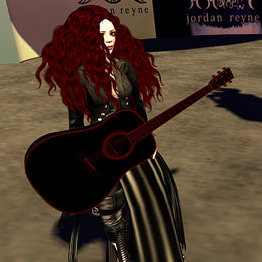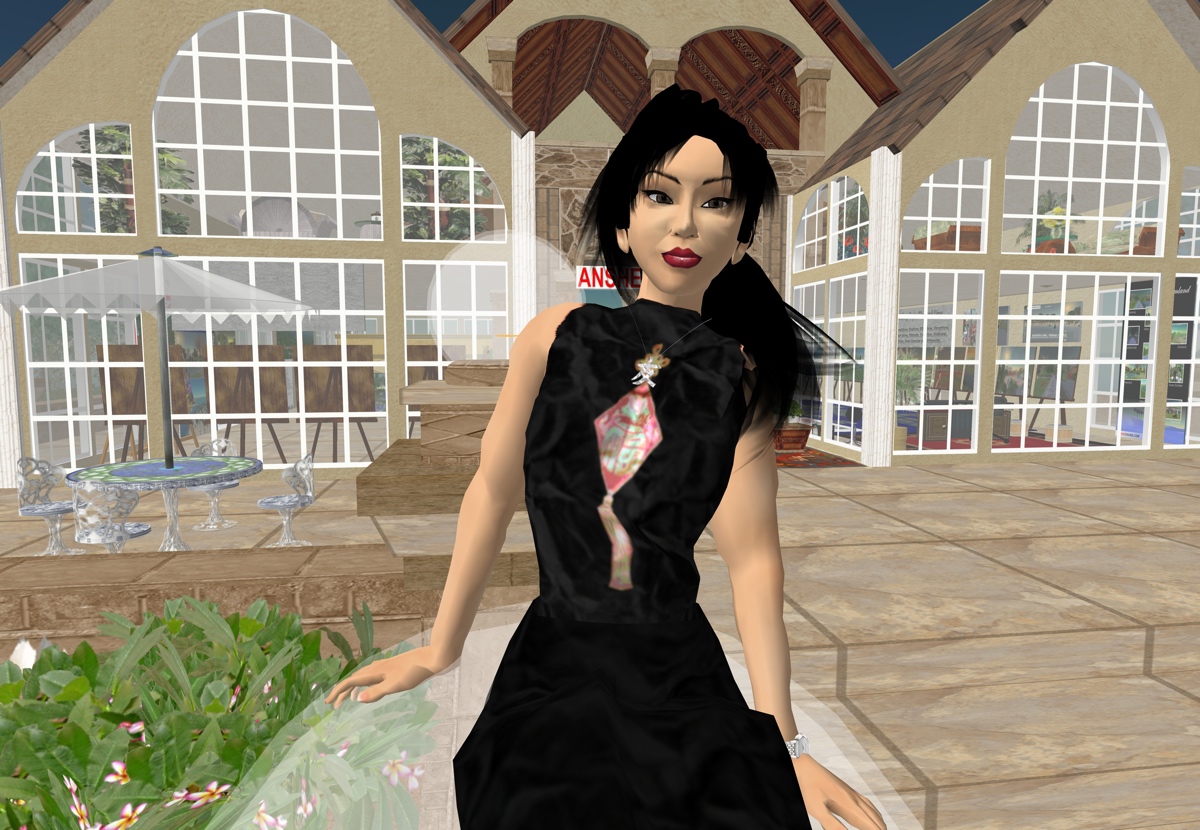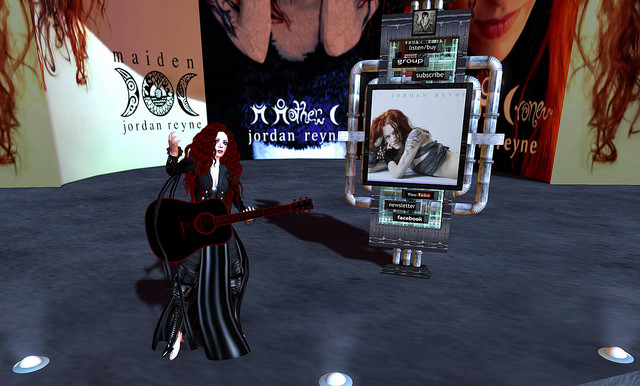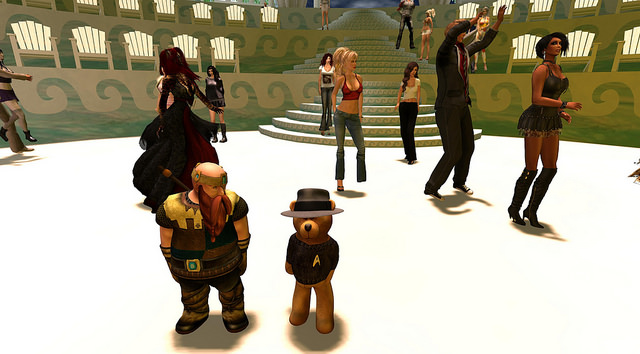 The virtual world Second Life launched in mid-2003 and from the start it was out of place. Its jerky and cartoonish graphics seemed to belong more to the 1990s than to the new era of social software. Nevertheless, Second Life enjoyed as much media attention in the 2000s as Web 2.0 darlings like Flickr and YouTube.
The virtual world Second Life launched in mid-2003 and from the start it was out of place. Its jerky and cartoonish graphics seemed to belong more to the 1990s than to the new era of social software. Nevertheless, Second Life enjoyed as much media attention in the 2000s as Web 2.0 darlings like Flickr and YouTube.
Nowadays, in the middle of the 2010s, Second Life gets much less attention. Its user base peaked in 2008, at about 550,000 active users. But the company could be about to enjoy a…well, second life. With the help of new Virtual Reality (VR) headsets like Oculus Rift and Sony Morpheus, Second Life may yet become a stellar example of social software. Although, as you’ll discover in this essay, perhaps Facebook and a new company called High Fidelity will be the big winners in this emerging market.
The Missing Link in Second Life
To understand the opportunities in social VR, we first need to do a quick review of the past. On 1 May 2006, at the height of Web 2.0, BusinessWeek ran a cover story on Second Life entitled My Virtual Life. The story was about Anshe Chung, the Second Life avatar of Ailin Graef. A Chinese-born school teacher who lived in Germany, Graef had made US$250,000 selling virtual land on Second Life. Later that year she became Second Life’s first real-world millionaire. These days Anshe Chung (the name she now goes by professionally) runs a virtual reality studio, which employs about 80 people, and has invested in a number of other VR-related startups.

Chung/Graef is still the poster girl of business success on Second Life, but in reality she’s an outlier. The vast majority of Second Life “residents” (its term for users) either don’t make any money or earn a pittance. That’s because the primary markets in Second Life are related to the product itself: virtual land and virtual fashion. It’s like the early days of tech blogging, in 2003-04, when we mostly blogged about blogging.
Second Life will only become truly interesting, in a business sense, when its users can make money from the real world. And what’s the key to that? You guessed it: better social experiences.
Social VR Experiments
One market where VR could lead to better social experiences is live music. A musician already experimenting with virtual reality is Jordan Reyne, a Goth influenced singer-songwriter who has performed many times within Second Life. Most recently, she gave a series of “inworld” concerts in March.

In a blog post entitled How to Attend an Online Gig, Jordan explained that Second Life is a good way for fans to hear a live show no matter where they’re located IRL (In Real Life). Another benefit of a Second Life concert is that the performer can interact with the listeners. In a review of a recent Jordan Reyne concert, the Second Life blog Ciaran Laval noted that “Jordan belted out several tunes to an eager audience and allowed them to vote on which cover song she should perform.” OK, the audience at Jordan Reyne’s concert included dwarves and small bears, but the point is these were real people at a live concert.

If you look beyond the cartoonish aspects of Second Life, the fact that it brings people together in one (virtual) place indicates that it has potential as a market for social experiences. But Second Life needs to get the user experience right for mainstream users. Which is where Virtual Reality comes in.
The Need For Better Virtual Spaces
VR is a natural fit for virtual worlds, because it creates a far more immersive experience than watching two-dimensional dwarves and bears on your PC screen. A key word in VR is “presence,” meaning how believable a virtual reality experience is. If Second Life enables its users to transport into a 3D world using VR headsets, it will increase presence significantly. It’ll feel like you’re really there, at that live concert.
The problem is that VR headsets are not yet ready for commercialization. The one with the most interest, Oculus Rift, hasn’t even released its first consumer version. But it’s coming; Oculus 1.0 is likely to be released before the end of 2015.
Along with good VR headsets, we’re going to need compelling virtual spaces to explore. Second Life will be a leader in that, but perhaps the one to watch is the second company of Second Life creator Phillip Rosedale. He formed High Fidelity in 2013, with the aim of providing “shared virtual reality” on a worldwide scale. It’s clear that Rosedale wants to bring the real world to virtual reality:
“We believe that both the hardware and the internet infrastructure are now available to give people around the world access to an interconnected Metaverse that will offer a broad range of capabilities for creativity, education, exploration, and play.”
High Fidelity is trying to do what Second Life must do also. To quote its homepage, virtual worlds need to become “incredibly immersive” and the social interaction more “lifelike and emotional.”
Facebook & Social VR
Let’s not forget that Facebook is hugely invested in Virtual Reality taking off, due to its acquisition of Oculus in March 2014. Nobody quite knows what a 3D Facebook will be like, but it will certainly open up new markets for virtual shared experiences. If you think shared video streams from Meerkat and Periscope are an interesting development, remember that they’re 2D and not in the least immersive.
I began this essay talking about Second Life, but it may not even be a winner in this new world of VR in virtual worlds. Not for lack of trying, because Linden Lab (the company that runs Second Life) is in the process of developing a new version of Second Life for the Oculus Rift.
Second Life is a survivor and I think it will adapt well to VR headsets. But I wouldn’t be surprised if it’s Facebook and High Fidelity that will take VR mainstream, by delivering compelling social VR experiences to a wider audience than Second Life has reached so far.
Whatever the case, entrepreneurs and businesses should start thinking now about what social software will be like when VR hits it big.
If you’d like to further explore the business opportunities in virtual reality, you may be interested in my consulting services.

Nice article but Second Life has been updating like crazy recently and looks pretty good.
It and its inhabitants no longer look cartoonish, unless they want to do so.
That is the ultimate freedom to change your avatar in any way you want.